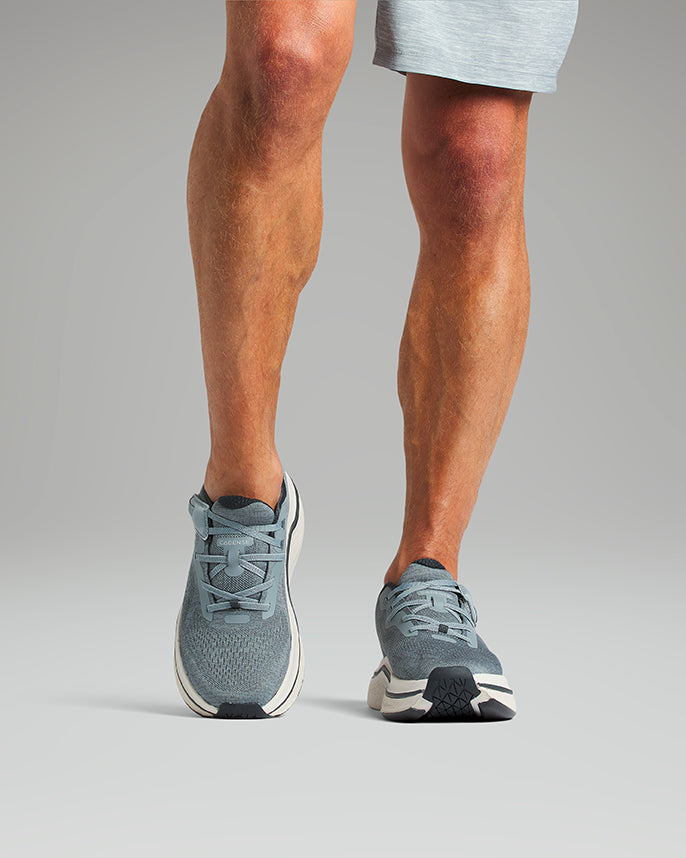Article: Is Walking Bad for Neuropathy Pain?

Is Walking Bad for Neuropathy Pain?
Let’s cut to the chase – is walking really that bad for neuropathy?
Not at all. In fact, walking is generally considered beneficial for people living with peripheral neuropathy — a condition that occurs when the nerves in the body’s extremities, such as the hands and feet, become damaged. This nerve damage can cause pain, numbness, tingling and weakness.
While walking can sometimes feel uncomfortable, it’s far from impossible — and, when done safely, it can actually improve circulation, strength and overall wellbeing.
In this guide, we’ll explore how walking can help reduce nerve pain and share practical ways to walk safely and comfortably with neuropathy.
Benefits of Walking for Neuropathy
It might not seem intuitive that walking could help when your feet are in pain — but “walking it off” can actually make a real difference. Here’s why.
Improved Circulation
Dr. Bussell at Loma Linda University Health explains that healthy nerves rely on good blood flow to receive nutrients and clear waste.
If you spend long periods being inactive, your circulation can suffer, which in turn makes it harder for your nerves to repair themselves. Walking is a simple, low-impact way to encourage better circulation throughout the body.
Because reduced blood flow to the limbs can worsen nerve pain and damage, gentle walking is often encouraged as a way to boost circulation and ease discomfort over time.
Muscle Strengthening
Walking can also help maintain strength in your leg and foot muscles.
Brett Starkowitz, master trainer and head of education at Ten Health & Fitness (London), notes that walking won't necessarily build new muscle but does prevent lean tissue and help maintain stability. Stronger legs and feet support better balance, helping you move more confidently day to day.
Lower Stress Levels
Living with chronic pain can take a toll — physically and emotionally. The more stressed you feel, the more intense your pain may seem.
The good news is that walking helps break that cycle by reducing stress hormones like cortisol. Certified personal trainer Michelle Rogers (UK Blue Cross affiliate) explains that even a 20–30-minute walk can lower cortisol levels, improving both mental and physical wellbeing.

Risks of Walking with Neuropathy
Although walking offers many benefits, neuropathy can make it slightly trickier to stay safe and steady. Here’s what to look out for.
Balance and Coordination Issues
Many people with neuropathy experience numbness in their feet, making it harder to feel the ground beneath them. This reduced sensation can increase the risk of tripping, stumbling or falling.
Wearing adaptive trainers with stability features can help improve your balance and reduce the amount of effort needed to lift your feet.
If balance is a challenge, start on flat, even surfaces such as pavements or smooth park paths. Avoid trails or cobbled areas until you feel more confident.
Risk of Injury
Pushing yourself too hard can increase the risk of overuse injuries. Start slowly, take frequent breaks and gradually build up the length of your walks.
At first, stay close to home or your car so you can return easily if discomfort increases. Listen to your body — consistency matters more than distance.
How to Walk Safely with Neuropathy
With some preparation, walking can become one of the most beneficial, low-impact forms of exercise for neuropathy. Here’s how to stay safe and comfortable.
Recognising Foot Pain and When to Stop
Consultant neurologist Dr. Greg Carter advises keeping an eye out for warning signs such as:
-
Muscle cramps or heaviness in your legs or feet
-
Shortness of breath that doesn’t ease after rest
-
Extreme fatigue or pain lasting more than a day
-
Sharp or burning nerve pain that worsens with activity
If you experience any of these, it’s best to pause your walk and rest.
Those who experience numbness should regularly check their feet for unnoticed cuts or blisters — since reduced sensation can make it easy to miss minor injuries.
If you ever feel unsure, speak with your GP or podiatrist before resuming exercise.

Lifestyle Changes and Home Remedies for Managing Neuropathy
Managing peripheral neuropathy often involves a holistic approach. While medical treatments are important, healthy lifestyle habits can make a big difference in daily comfort and mobility.
Dietary Considerations
-
Maintain steady blood sugar through balanced meals
-
Eat foods rich in vitamin B12 (e.g. fish, eggs, dairy)
-
Discuss alpha-lipoic acid supplements with your GP before taking them
-
Stay hydrated throughout the day
-
Reduce processed foods and refined sugar
Healthy Habits
-
Limit alcohol consumption
-
Stop smoking, as it can worsen circulation
-
Maintain a healthy weight
-
Get enough sleep
-
Monitor blood sugar if diabetic
Gentle Movement Practices
Incorporate low-impact activities such as:
-
Tai chi to improve balance
-
Gentle yoga or stretching (seated or supported)
-
Swimming or water aerobics for joint relief
-
Mindful walking on smooth, level ground
Daily Self-Care Routine
Morning:
-
Gentle leg and foot stretches
-
Foot inspection for cuts or irritation
-
Wear moisture-wicking socks and supportive trainers
Evening:
-
Soak feet in warm (not hot) water
-
Light massage or gentle moisturiser
-
Elevate legs to improve circulation
Natural Pain Management
-
Cold packs for flare-ups
-
Warm compresses for chronic stiffness
-
Compression socks (seek GP advice first)
-
Breathing exercises or mindfulness for stress relief
Choosing the Best Footwear
One of the easiest ways to make walking more comfortable with neuropathy is to wear trainers designed for mobility support.
Try Cadense Adaptive Trainers, featuring patented Variable Friction Technology — helping you glide smoothly over uneven ground while maintaining balance and reducing fatigue.

Walking on Even Surfaces
Start with flat, paved routes such as local parks or pavements. Uneven or rocky surfaces can strain your feet and increase fall risk.
If you plan to go hiking, check that the trail terrain is gentle and well-maintained before setting out.
Diagnosis of Peripheral Neuropathy
If you suspect neuropathy, getting a proper diagnosis from your GP or a specialist neurologist is crucial. Accurate diagnosis ensures that the underlying cause can be treated appropriately.
Neurological Examination
Your GP or neurologist will assess muscle strength, reflexes and sensation, asking about symptoms like numbness, tingling or weakness.
Nerve Function Tests
If nerve damage is suspected, additional tests may include:
-
Electromyography (EMG): Measures muscle electrical activity
-
Nerve conduction studies: Check how fast electrical signals travel through nerves
-
Sensory tests: Evaluate your ability to detect temperature and vibration
-
Sweat testing: Assesses nerve control over sweat glands, which can be affected in neuropathy.
Adaptive Trainers for Every Step
Explore the latest in supportive footwear designed to make walking with neuropathy safer and more comfortable.
Cadense Adaptive Trainers for men and women — engineered with Variable Friction Technology to improve stability, reduce pain, and enhance mobility.




